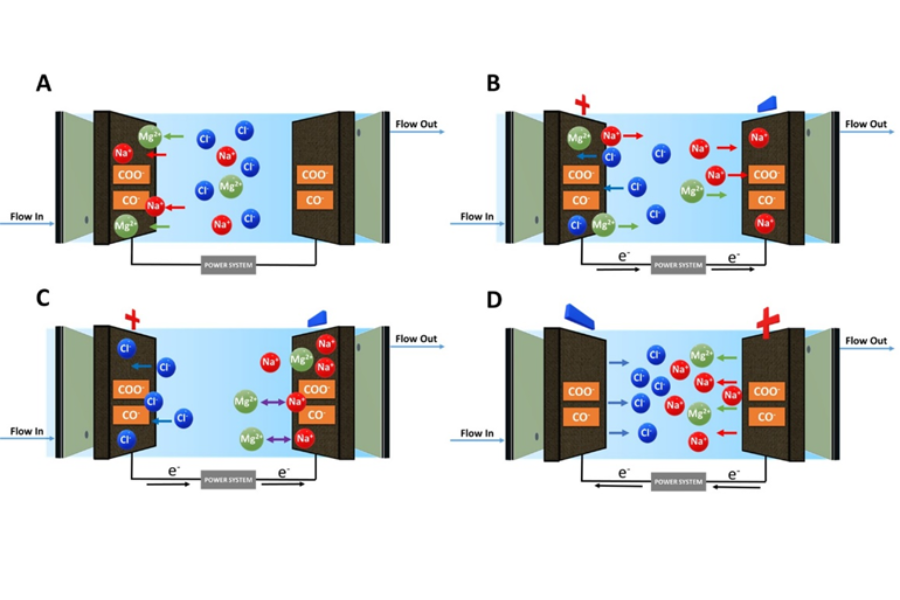Tackling the challenges of soil salinity: how to improve agricultural sustainability using capacitive ion exchange technology
Soil salinisation is a major challenge for agricultural activities. To address this challenge, the industry is looking for a solution to reduce both the ionic conductivity and the sodium/calcium-magnesium ratio in irrigation water in order to reduce the risks of soil sodification and promote sustainable crop production.
In this context, a recent study carried out by researchers at IMDEA Energy (Electrochemical Processes Unit and Photoactivated Processes Unit) in collaboration with the University of Wageningen (The Netherlands) explores the capacitive ion exchange mechanism that allows the removal of mostly monovalent ions (sodium) while increasing the concentration of divalent cations (calcium and magnesium) in the water. The result is a decrease in ionic conductivity and sodium adsorption rate (SAR), resulting in a higher quality water for crop irrigation.
The capacitive ion exchange process involves different steps; initially cations were captured during the conditioning step, followed by a slow desorption kinetics of divalent cations and a fast capture of monovalent ions during the charging step, leading to a reduction of the SAR of the water. Validation of this mechanism was carried out by practical experiments in a pilot plant located at Institute IMDEA Energy, confirming its applicability even at high ion concentrations.
This research significantly extends and validates the theoretical model recently published by a research group at the Technion – Israel Institute of Technology through practical experimentation in IMDEA Energy’s pilot plants. The results suggest that the application of energy-efficient capacitive ion exchange treatment in irrigation systems is very attractive as it facilitates the reduction of SAR in water, mitigates the risks of soil sodification and improves agricultural productivity. In addition, the robustness and reliability of the capacitive ion exchange mechanism has been demonstrated in extensive research involving tests both in a pilot plant and in different laboratory modules.
The study led by IMDEA Energy’s electrochemical processes unit thus confirms the effectiveness of the proposed technology in manipulating the concentrations of ions such as sodium, magnesium and calcium in treated water. This finding opens the door to a new process that allows the modification of water composition based on the demand established by the end user.
More information: https://doi.org/10.1016/j.watres.2024.121469




